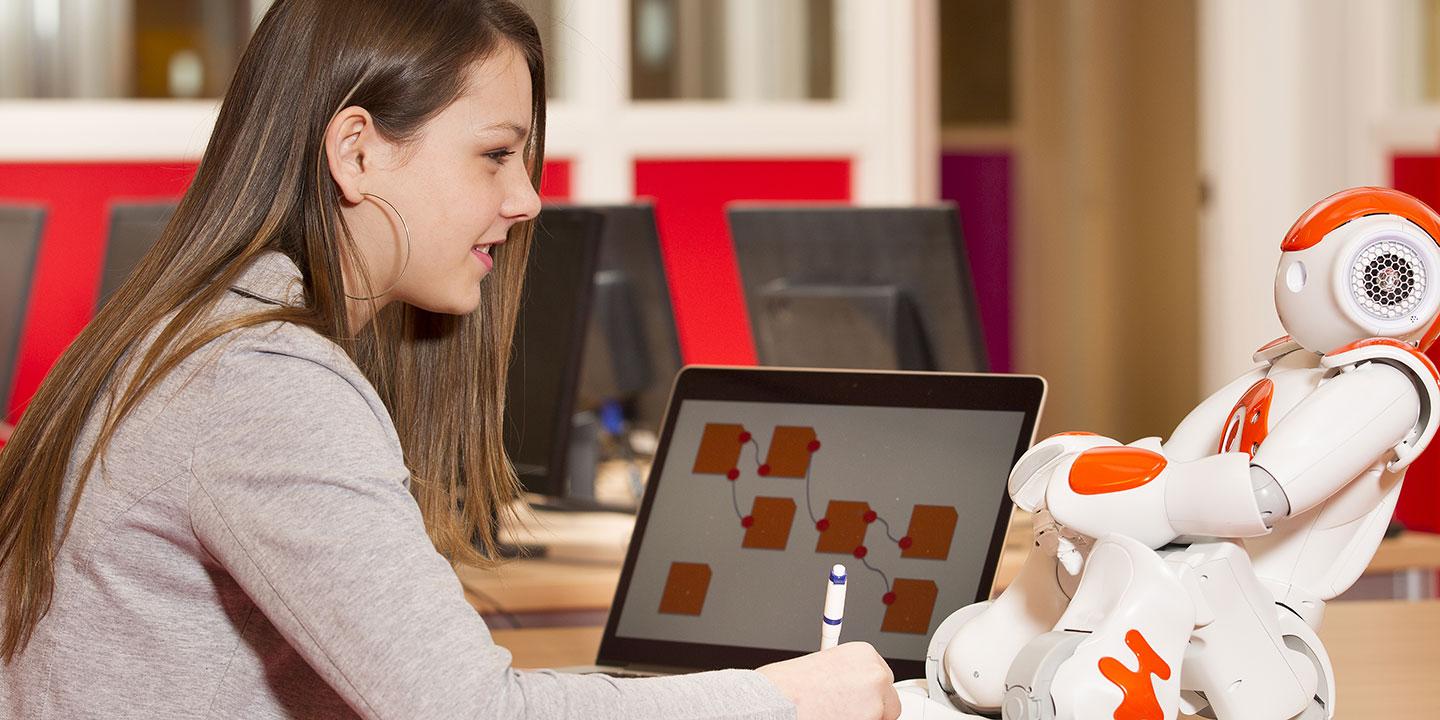New guests in the classroom: How students learn to trust educational robots

How do children learn to trust and accept educational robots in schools? This is less a technical question than a social, pedagogical and political negotiation, as a study has shown.
More and more educational robots are being used in schools – for example, "Thymio" or "Blue-Bot". These are physical devices designed to teach children programming and robotics. They are designed for use in classrooms. However, as is often the case with new technologies and artificial intelligence, the use of educational robots triggers mixed reactions from the public. How do students and teachers feel about them? A research project led by Marc Audétat (University of Lausanne) has analysed, among other things, the interaction between students, teachers and robots, as well as new pedagogical experiments in the classroom.
The most important findings
Trust isn’t created on its own – it develops through active, positive interactions with educational robots. Whether robots are perceived as valuable additions to the classroom also depends on the institutional framework and public discourse. In order for students and teachers to integrate robots into the classroom in a meaningful way, they have to adapt routines and establish experiments. The study showed that students developed creative strategies for dealing with robots in pedagogical experiments. Another notable finding was that learning with robots enabled progress in children with special needs. For example, the use of robots improved the social interactions of students with autism spectrum disorder.
Relevance for policy and practice
The study makes it clear that educational reforms in the digital sector should not rely solely on technology. They can only be successful if teachers, students and experts are involved in the design. The use of robots requires a sensible framework – for example, in the form of pilot programmes or guidelines. In practice, it has been shown that educational robots can stimulate learning processes. This is especially true of children with special needs, for whom robots can open up new opportunities for learning and interaction. Given the right framework conditions and the necessary trust, robots can be valuable additional learning tools in schools.
Three main messages
The situation: The question of how and why the "digital transformation" is taking place in the target area of education policy – local, regional, national – needs to be answered. This includes questions such as: What is at stake? Who defines it? How does pedagogical expertise become an integral part of the political process? And how is "trust in technology" articulated in educational policy decisions?
Learning from past mistakes: There is no ready-made technical solution for digital education or pedagogy. The introduction of PCs, iPads or educational robots in schools is not enough to create a digital education policy. It is essential that the pedagogical objectives and content are clearly thought through and defined. Moreover, the training of teachers needs to be planned and implemented, as the reform in the canton of Vaud has shown – without this, digital education policy risks falling short.
Questioning the digital: Like all information technologies in any application context, educational technologies are also changing pedagogy and social relationships in education. There is a big difference between "learning for the digital" (practicing with technology to acquire new skills) and "learning with the digital" (using technology to learn in an existing field). In both cases, the expected advantages and disadvantages should never be taken for granted. Rather, they should be carefully examined and evaluated before the technology is introduced. Many of the educational technologies now on the market are not suitable or ready for use in schools.
For details of the methodology employed by the researchers and further background information, see the NRP 77 project website:
Further research projects from the National Research Programme “Digital Transformation” (NRP 77) can be found here:
